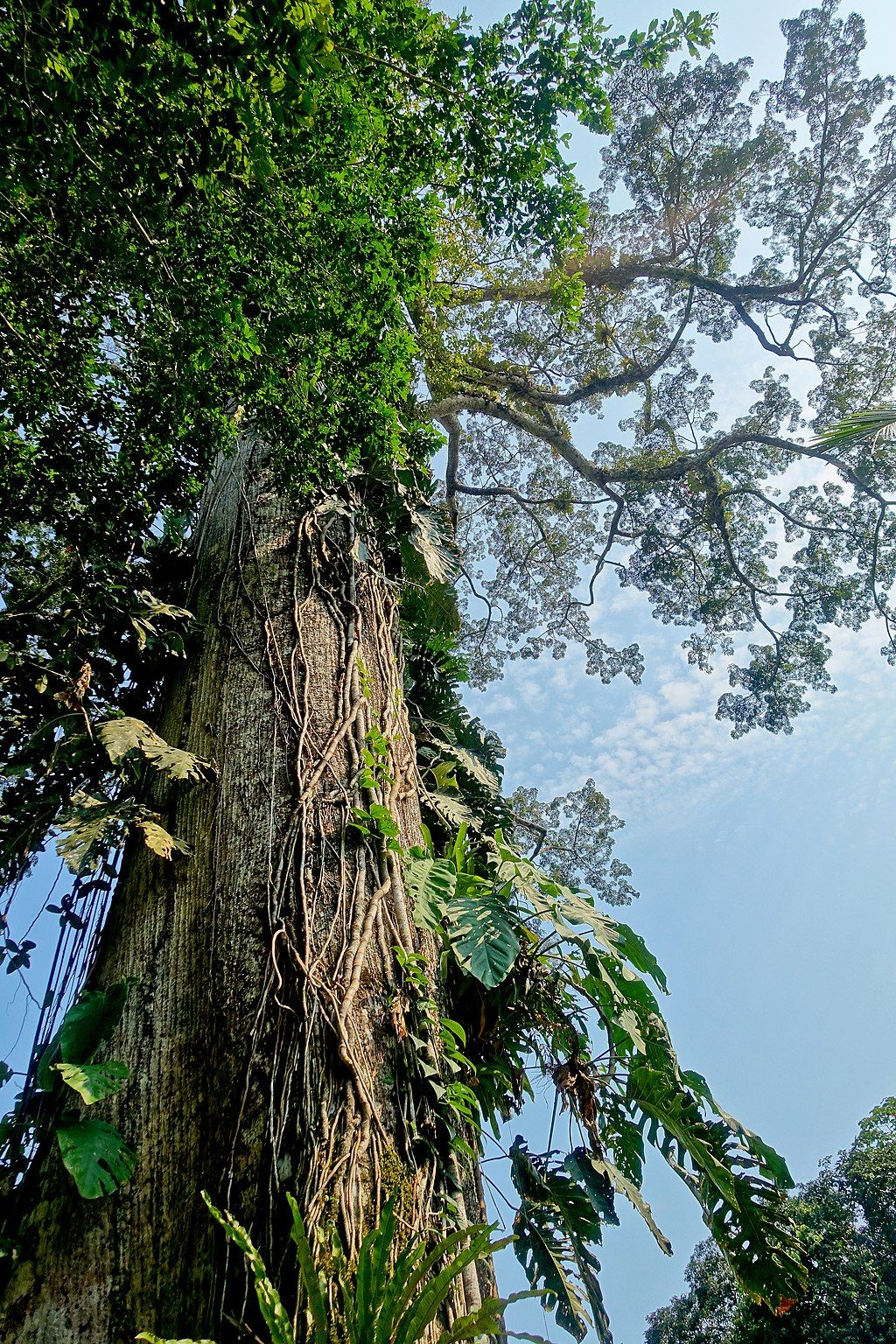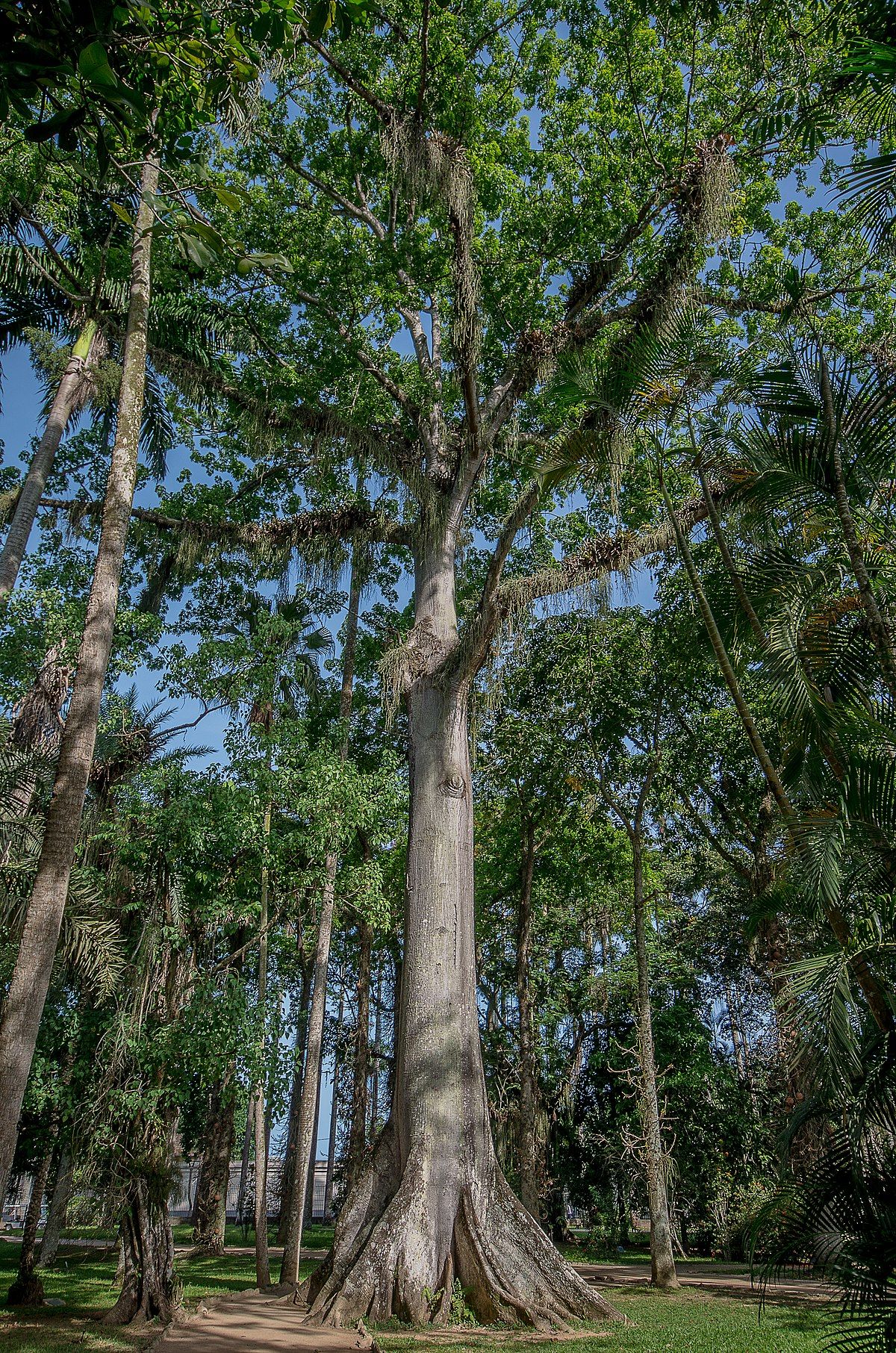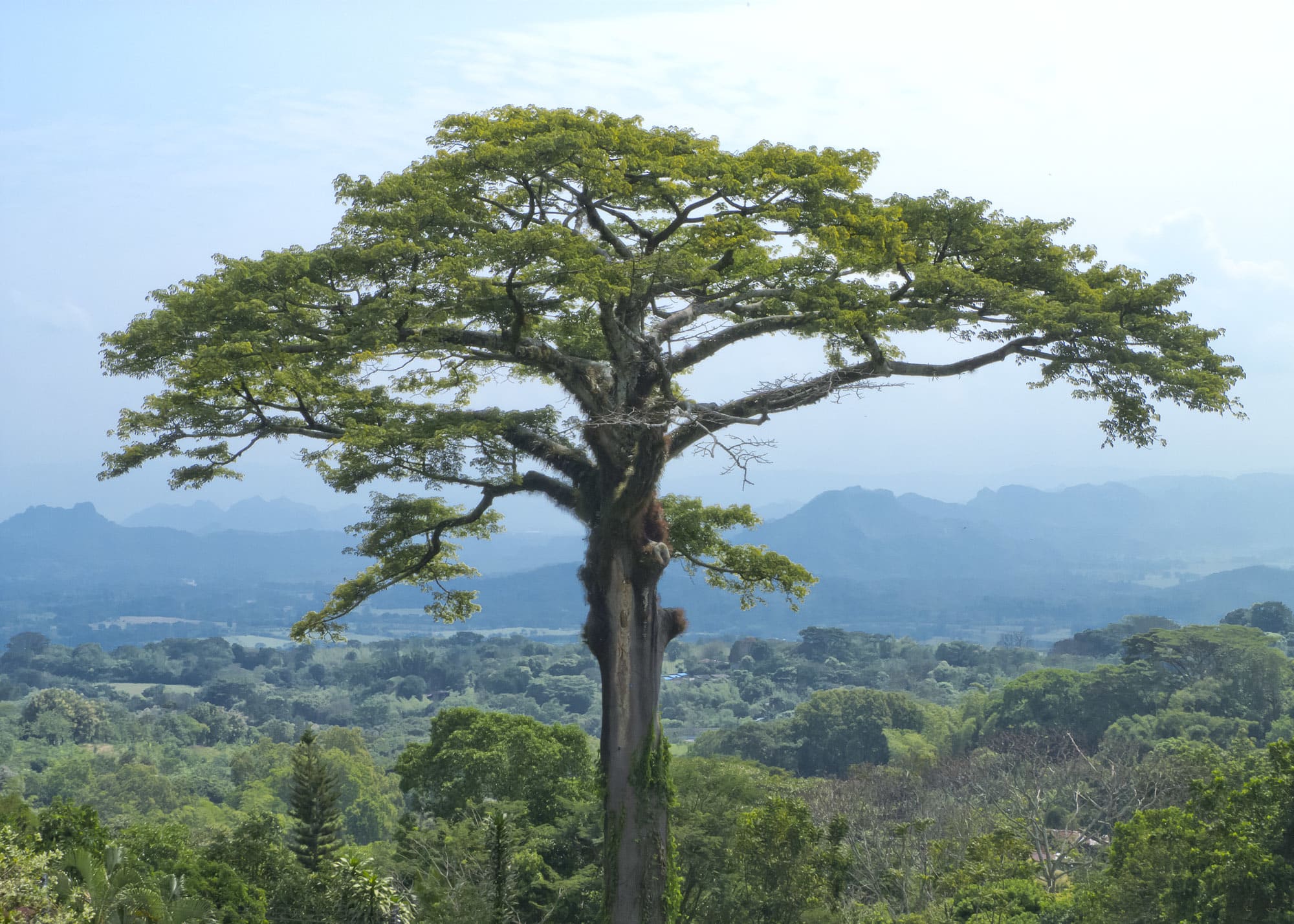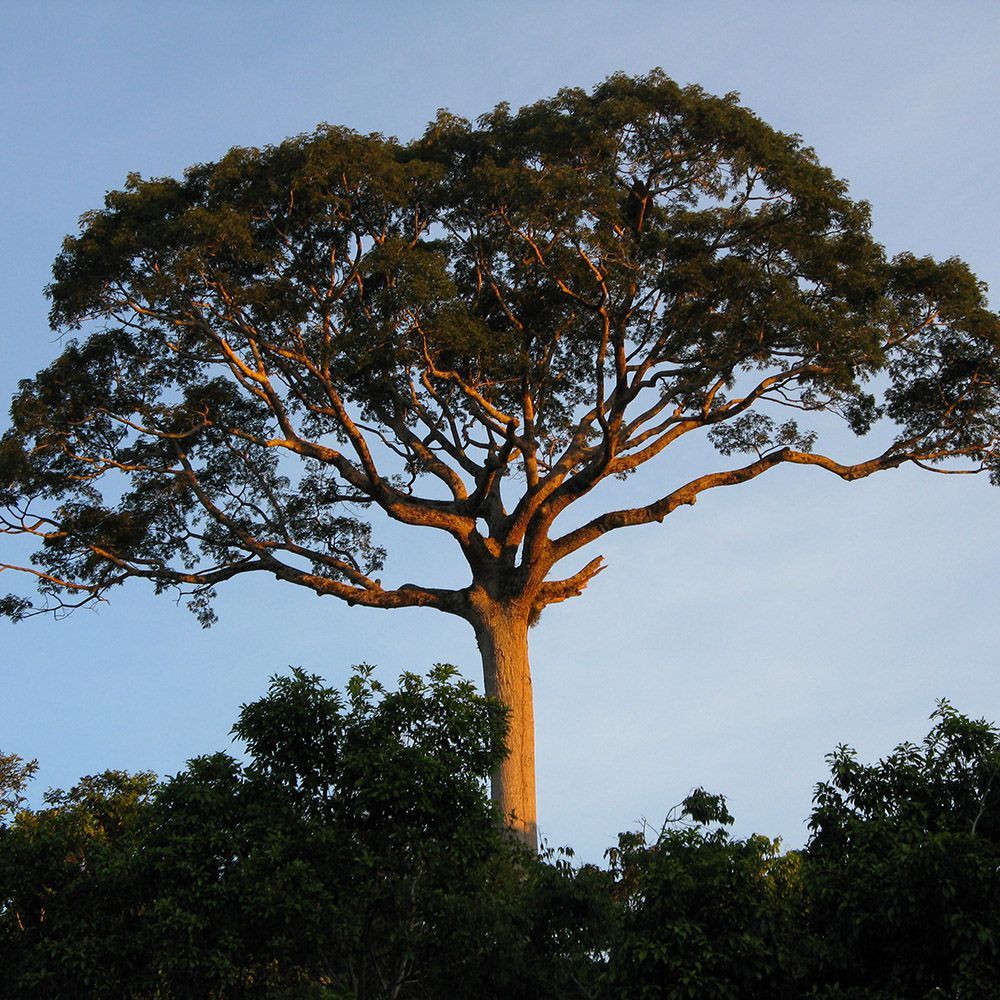Ceiba pentandra. Kapok tree, Ceiba, silk cotton tree
The kapok tree is a mighty, deciduous tree with an umbrella-shaped to round crown. It can reach a height of 75 meters and a trunk diameter of more than 3 meters.
Among other things, kapok is extracted from the kapok tree. The kapok fibers have a length of 10 to 35 millimeters and consist of 64% cellulose and hemicellulose. Due to their wax coating, they are water-repellent and difficult to spin. A single tree yields about 20 kg of pure fibers per year. Without further treatment, these can be used as filling material for lifebelts and life jackets or as upholstery and insulation material.
The seeds of the kapok tree are used regionally for the production of soap or cooking oil due to their high content of fatty oil (kapok oil) (up to 25%), but they are also edible and are also used for cattle feed. Due to its antibacterial effect, kapok is also used for wound care. The light wood, which is not particularly valuable, is soft and not durable. It is used for some applications.






